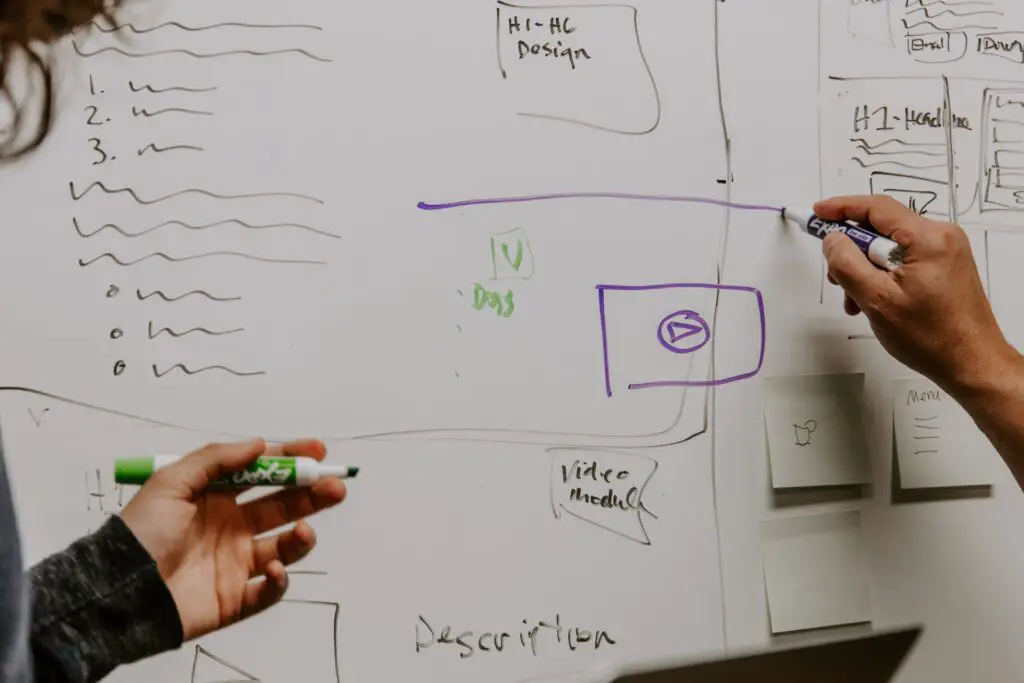A lecture or other types of talks on academic subjects will be played for you in IELTS Listening Part 4.
Another way of understanding IELTS Listening Part 4 is to imagine a classroom in a university. There are a myriad of subjects and topics which are taught or discussed in universities ranging from Sociology to Physics and from Literature to Food Technology. You are expected to understand a lecture given on an academic subject just like a university student would.
Although the audio, which is between 5 and 8 minutes long, may be esoteric in nature for some, a high school-level student should be able to figure out the meaning even if the topic is unfamiliar.
There will be just a single speaker in IELTS Listening Part 4. Unlike the other parts, the entire audio is played without breaks. You have to read all the questions at once before the audio begins playing. You mainly get note completion questions in IELTS Listening Section 4.
IELTS Listening Part 4 tips: Listening for transition
IELTS Listening Part 4 is a long section without breaks. Though the question paper has only 10 questions, the speaker will talk about many things which might not be written in the question paper. So it is easy to get lost in the monologue waiting for the answers. Sometimes, even a slight distraction may take your attention away from the audio.
But there is a trick to overcome this. Look at the IELTS Listening Part 4 question paper below:
| Part 4 Questions 31-40 Complete the notes below. Write ONE WORD ONLY for each answer. |
|---|
APPROACHES TO INTERNATIONAL EXPANSION Exporting and Importing • a countertrade agreement involves bartering products for products instead of currency • approximately 31 ……………………………………… percent of all international trade involves countertrade • export agents assist companies to manage their international 32 ……………………………………… Getting involved in International Business • a trading company purchases products in one country and sells them to customers in another country similar to export agents • licensing is a trade agreement where the licensor lets the licensee to use its name, logo, product, brand, etc. for a fee or 33 ……………………………………… • licensing is used by large companies such as Coca Cola and Pepsi but also beneficial for small companies • franchising is a form a licensing where the franchisee has to conduct its business as per the franchiser’s standards of 34 ………………………………………, e.g. McDonald’s Contract Manufacturing and Outsourcing • contract manufacturing involves hiring a foreign company to manufacture products in the name and 35 ……………………………………… of the domestic company • outsourcing is delegating tasks to countries where the cost of labor and 36 ……………………………………… is lower • outsourcing might be controversial because jobs are lost to foreign workers Offshoring and Joint Venture • offshoring is the relocation of companies to other countries • the parent company still exercises 37 ……………………………………… over the offshore operation • a foreign company may sometimes enter a joint venture agreement with a local company • the 38 ……………………………………… is divided among the partners in the joint venture Strategic Alliance and Direct Investment • strategic alliances is common in industries with high competition and cost • usually automobile and/or 39 ……………………………………… industries form strategic alliances with foreign companies • direct investment is the buying up of foreign assets • companies may directly invest to build new facilities or purchase existing companies • direct investment is highly 40 ……………………………………… compared to other forms of international expansion |
There are two key things to notice here:
Firstly, the question paper looks like a summary of an academic presentation, just like how students might take notes of a lecture in their class.
Secondly and more importantly, the question paper is divided into several sections like Exporting and Importing, Contract Manufacturing and Outsourcing, Offshoring and Joint Venture, among others. Just to make finding the answers a little bit easier, the lecturer will also divide his or her speech into several sections.
Therefore, focusing on transition words and phrases in the audio helps to orient yourself according to the IELTS Listening Part 4 question paper. Even if you get distracted during the lecture, you might find your way back by listening for transitions. Look at the table below:
| Function | Transition words |
|---|---|
| Beginning the lecture | • Today, I’ll talk about… • In today’s lecture, we’ll learn about… • My presentation will focus on… • I’ll start… |
| Changing the topic | • Let’s move on to… • Now, I’d like to mention… • The next point I want to… • Another concept is… |
| Giving examples | • For example… • For instance… • …such as… • A typical example is… |
| Presenting arguments | • The main factor is… • Why/How/Can…? (Asking a question is a method often used to present arguments. The speaker will bring up a question and then answer it.) • The reason is… • The cause is… |
| Adding more arguments | • Similarly… • Likewise… • Additionally… • Besides… • Moreover… • Furthermore… • Apart from that… |
IELTS Listening Part 4 practice
Listen to the audio and answer the questions from earlier.
| Part 4 Questions 31-40 Complete the notes below. Write ONE WORD ONLY for each answer. |
|---|
APPROACHES TO INTERNATIONAL EXPANSION Exporting and Importing • a countertrade agreement involves bartering products for products instead of currency • approximately 31 ……………………………………… percent of all international trade involves countertrade • export agents assist companies to manage their international 32 ……………………………………… Getting involved in International Business • a trading company purchases products in one country and sells them to customers in another country similar to export agents • licensing is a trade agreement where the licensor lets the licensee to use its name, logo, product, brand, etc. for a fee or 33 ……………………………………… • licensing is used by large companies such as Coca Cola and Pepsi but also beneficial for small companies • franchising is a form a licensing where the franchisee has to conduct its business as per the franchiser’s standards of 34 ………………………………………, e.g. McDonald’s Contract Manufacturing and Outsourcing • contract manufacturing involves hiring a foreign company to manufacture products in the name and 35 ……………………………………… of the domestic company • outsourcing is delegating tasks to countries where the cost of labor and 36 ……………………………………… is lower • outsourcing might be controversial because jobs are lost to foreign workers Offshoring and Joint Venture • offshoring is the relocation of companies to other countries • the parent company still exercises 37 ……………………………………… over the offshore operation • a foreign company may sometimes enter a joint venture agreement with a local company • the 38 ……………………………………… is divided among the partners in the joint venture Strategic Alliance and Direct Investment • strategic alliances is common in industries with high competition and cost • usually automobile and/or 39 ……………………………………… industries form strategic alliances with foreign companies • direct investment is the buying up of foreign assets • companies may directly invest to build new facilities or purchase existing companies • direct investment is highly 40 ……………………………………… compared to other forms of international expansion |
Click to reveal answer »
31. forty, 32. transactions, 33. royalty, 34. operation, 35. logo, 36. supplies, 37. control, 38. profit, 39. computer, 40. risky
Next lesson:
Gaurav Thapa is an experienced instructor of English as a Foreign Language. He has eight years of experience teaching IELTS and PTE.

